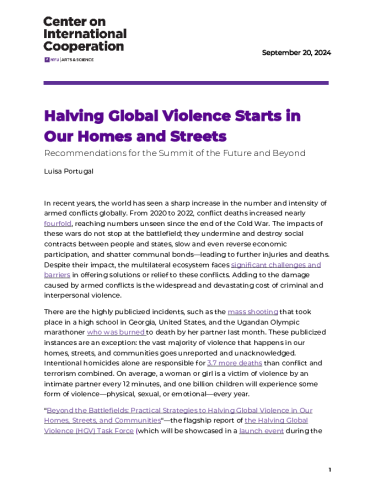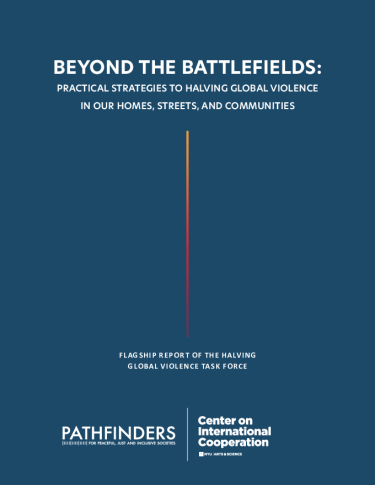In recent years, the world has seen a sharp increase in the number and intensity of armed conflicts globally. From 2020 to 2022, conflict deaths increased nearly fourfold, reaching numbers unseen since the end of the Cold War.
The impacts of these wars do not stop at the battlefield; they undermine and destroy social contracts between people and states, slow and even reverse economic participation, and shatter communal bonds—leading to further injuries and deaths. Despite their impact, the multilateral ecosystem faces significant challenges and barriers in offering solutions or relief to these conflicts. Adding to the damage caused by armed conflicts is the widespread and devastating cost of criminal and interpersonal violence.
It is crucial to shift the conversation on violence reduction and prevention into the development space. As member states decide during September 2024 at the Summit of Future what the Pact for the Future will look like, they should heed this call and focus on finding practical solutions for the violence that most often impacts people’s everyday lives. This new analysis, part of the CIC Perspectives series, examines the following:
- A development approach to reducing violence
- What works to prevent and reduce violence
- Four takeaways for the Summit of the Future

